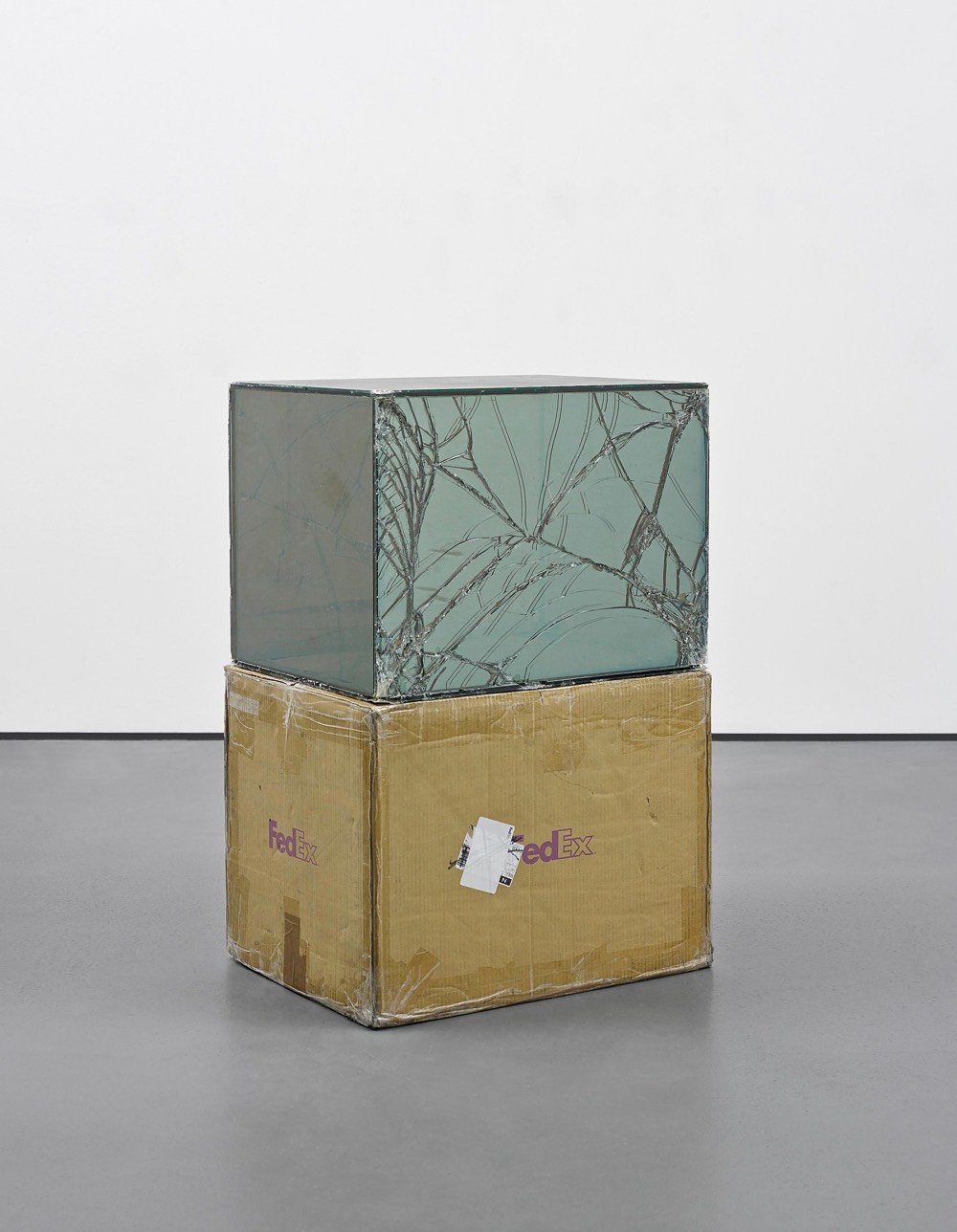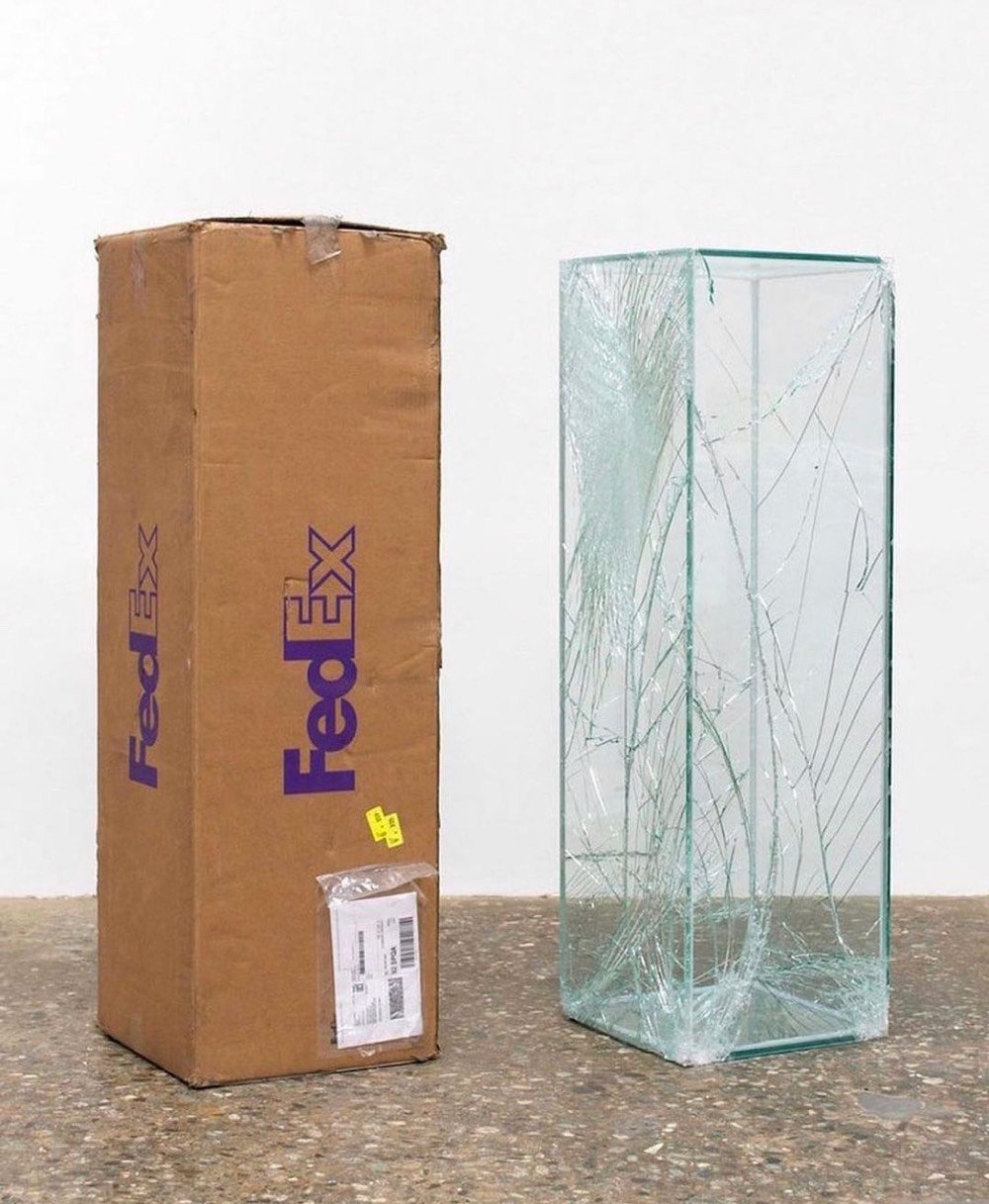FedEx Shipping Damage Creates Fractured Artworks




Since 2007, artist Walead Beshty has been cleverly using FedEx’s shipping infrastructure to create a series of artworks. He constructs glass objects that fit exactly into FedEx’s shipping boxes and then ships them to galleries and museums without any protection against damage. Any cracks or breaks in the glass became part of the work upon display at its destination. According this interview, part of what interested Beshty about doing this project related to the proprietary sizes of FedEx’s boxes:
As for the corporate dimension, I was aware that standard FedEx boxes are SSCC coded (serial shipping container code), a code that is held by FedEx and excludes other shippers from registering a box with the same dimensions. In other words, the size of an official FedEx box, not just its design, is proprietary; it is a volume of space which is a property exclusive to FedEx. When thinking about the work, its scale and so on, it made sense to adhere to that proprietary volume, because, as a modular, it had a real and preexisting significance in daily life, it was common, specific, and immediately familiar. That is, it had an iconic resonance that a more arbitrary form or shape wouldn’t have.
And each time the work is shipped — say from one gallery to another — it’s unwittingly altered further by a system created by a massive multinational corporation:
Rather than thinking in terms of the Duchampian readymade, which is most often understood as operating iconically — as in the appropriation and repositioning of a static thing — I was thinking of readymade systems of production, of using pre-existing active systems to produce a work. No object is truly static anyway, so this opened up broader questions I had about the tradition of appropriation, the way it froze cultural signifiers and reapplied them to other contexts, treated images as dead, static things… The object isn’t treated differently than other FedEx packages, I simply used FedEx to transport an object that registers how the system treated it in aesthetic terms. The result is that the object is constantly changing. Every time the work is shipped it goes through a material transformation.





Stay Connected